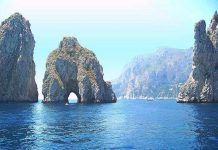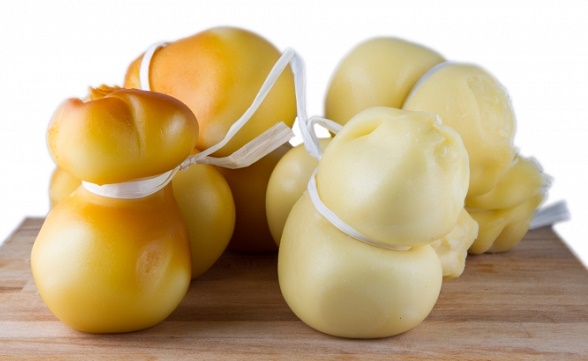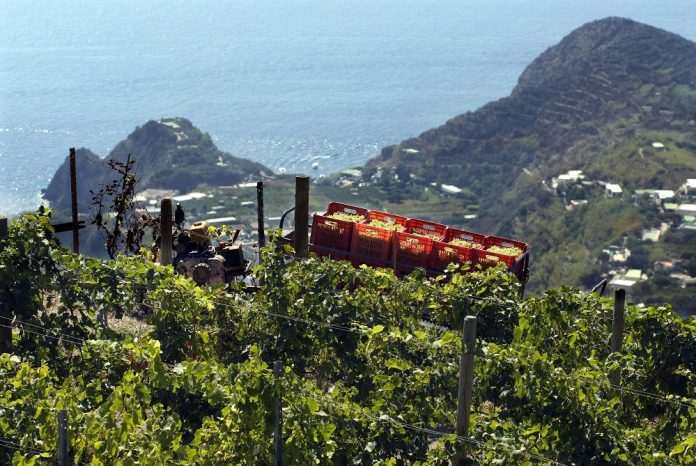
The wine of Ischia
The island of Ischia has been inhabited for several millennia and naturally its inhabitants began to cultivate the vine as it began to spread both for table consumption and for the production of wine. The beautiful island then, already a destination for the wealthy of antiquity, was also the protagonist of a local agriculture of self-sufficiency and production even for small exports. The wine was certainly not among the sought after of the empire, but still had a good quality, so much so that it limited the imports only to the nobles’ whims.
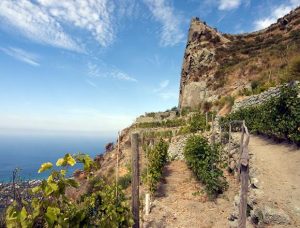 Certainly the mountainous nature of the island, and the relative reduced size of the cultivable areas, have always made that apart from some products, in particular craftsmanship or some foods like wine, the productions were exclusively for local consumption.
Certainly the mountainous nature of the island, and the relative reduced size of the cultivable areas, have always made that apart from some products, in particular craftsmanship or some foods like wine, the productions were exclusively for local consumption.
The geology
Ischia owes its orogeny to volcanic phenomena. This for the grapes means a strong presence of potassium, an essential mineral for their growth and to enhance some organoleptic characteristics. This erupting orogenesis in fact gave life to the island that was formed over a period of about 150 thousand years, when this volcanic activity began to conform the structure that we find today on site. The structure consists of a central core represented by Mount Epomeo which is made of green tuff that has found stratification on the island since 130 thousand years ago. In this period there was a submergence, with clear re-emergence in later periods, of the island.
This gave way to the tuff to assume the characteristic green color. Around this central core, various lava flows have been laid down, giving rise to the whole island. As for the climatic situation this seems to be favored by the particular topography of the island that sees the cone shape favor temperate climates, especially in winter.
Naturally good is the presence of the winds, always blowing in a geographical position in the middle of the sea. Naturally, the exposure is in all winds, in every season, in conjunction with the various hours of the day when you have different orientations and different winds. Depending on which blow, we can have variations in the humidity rate even 63% in the bad season, while in the good season this gap clearly decreases. The climate, however, is excellent and comfortable in all periods of the year, so that the wealthy ancient Roman Empire here built villas to cool off at sea winds during the summer.
Which grapes for Ischia red?
On the island of Ischia are mainly cultivated two vines for the production of red wines are the Guarnaccia and the Piedirosso.
The first is not an original native of Campania, but more probably more French, even if there are no certainties about it. A red berry, it should logically be a variation of Grenache, but no genetic test have been carried out that can support this suspicion, weakened also by the fact that there are no great somatic and organoleptic similarities. Currently, however, many scholars continue to confirm the relationship with the famous French grape.
A current, on the other hand, would even want it to be autochthonous, partly because its very little diffusion makes it difficult to place even historically due to the chronic lack of past documentation that describes it and attests its presence in other areas. So some scholars have also advanced the hypothesis of the classical origin of many southern vines, or the importation by the Greek colonists that around the sixth century BC gave rise to a flourishing Hellenic civilization in the south of our peninsula. This is because it is found on the coast of Campania that on the Calabrian, the main nucleus of origin of all those grapes.
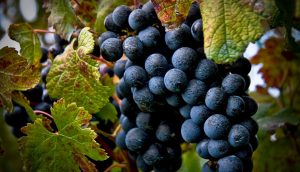
Only in Ischia, however, has found a primary use along with Piedirosso. The latter is instead autochthonous even if its original introduction has not yet been traced. Certainly present since ancient times it is the second vine for cultivated hectares of the region, after the ubiquitous Aglianico. In Campania it is also called Per ‘and palummo, because its spine recalls the foot of a pigeon. From this dialectal term the Italian term Piede di Palombo (Foot of Pigeon) was used for a long time, from which it derives the name Piedirosso used since 1909 by Carlucci. It is a very vigorous vine that ripens late, in October, but offers medium-low yields. These are berries that have a high concentration of sugar that provide an excellent supply of alcohol mixed with a good acidity.
The red wine of Ischia
In Ischia the denomination of controlled origin was approved by ministerial decree as early as July 31, 1973. It is used, for the blended, Guarnaccia from 40 to 50%, and Piedirosso in equal percentage.
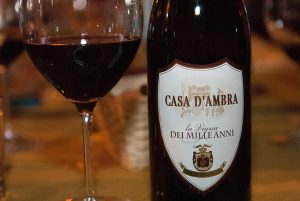
The yields can be pushed up to 9 tons per hectare. The grapes come from volcanic soils with a lot of skeleton, rich in potassium, pumice and phosphoric anhydride. So you have some beautiful ruby red wines, with vinous aromas and a good tannin. They are excellent both with meat and with some salted fish, such as cod. Try it with lamb, rabbit, or traditional Roman cuisine based on entrails, especially tripe. There is also a passable version to pair with desserts. The island clearly sees the presence of very few producers given the scarce cultivable extension.
The two main ones, D’Ambra and Pietratorcia, carefully work their wines. D’Ambra produces Piedirosso in perfect match with the Ischia-style rabbit. The Pietratorcia Cellars, on the other hand, offer great quality wines that can be combined with various dishes.

